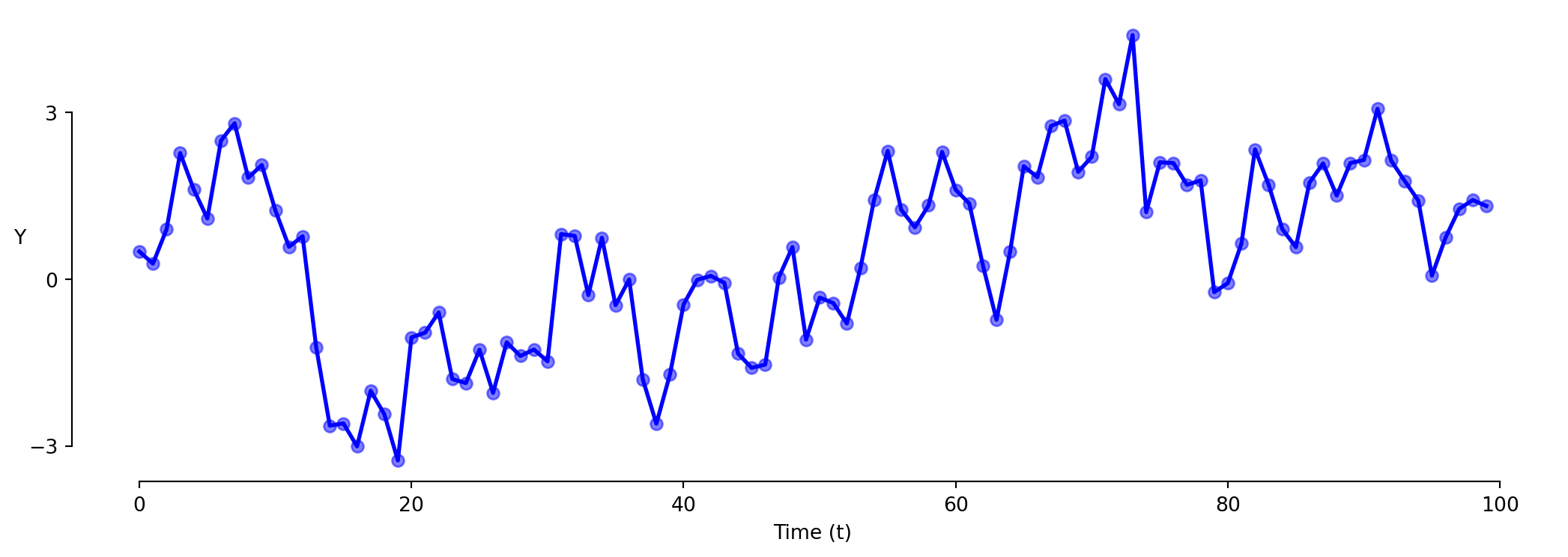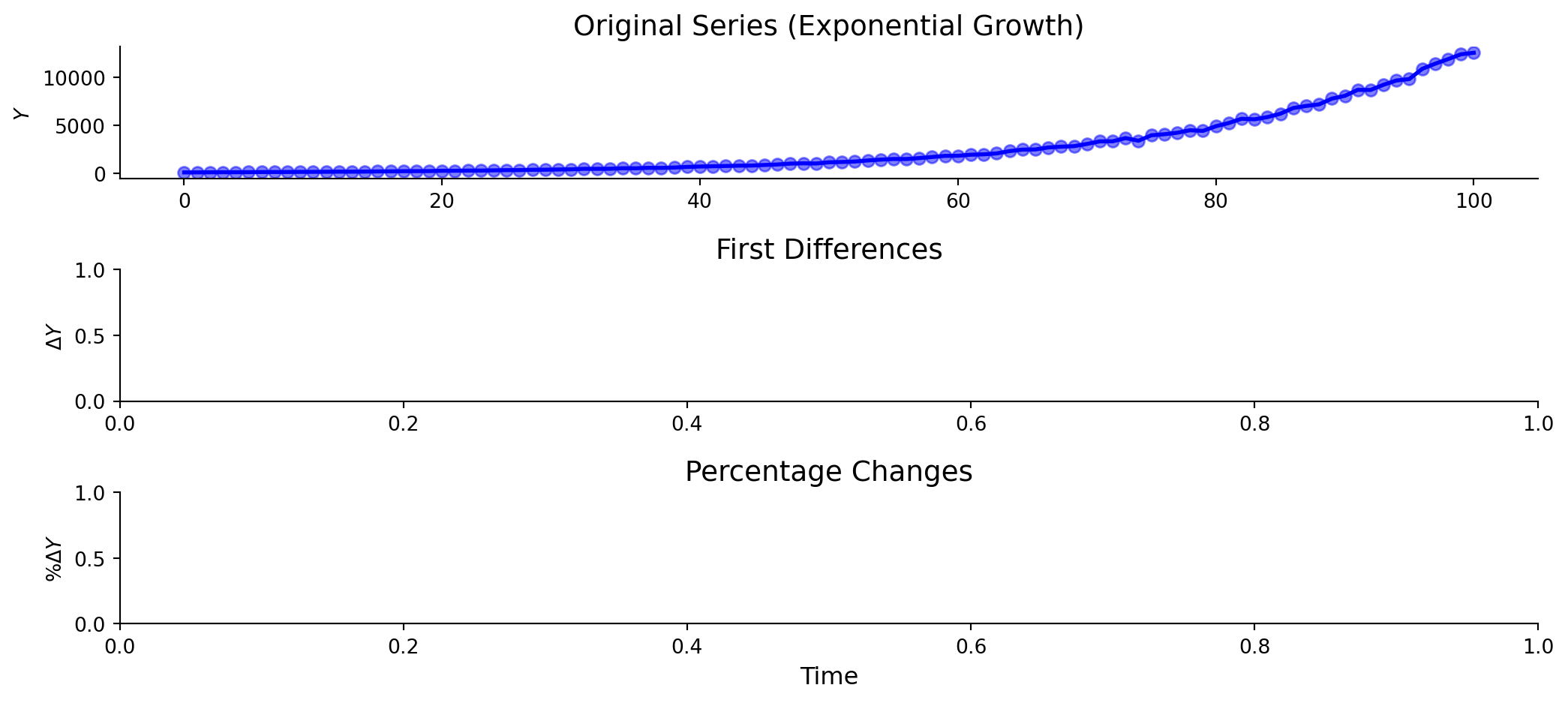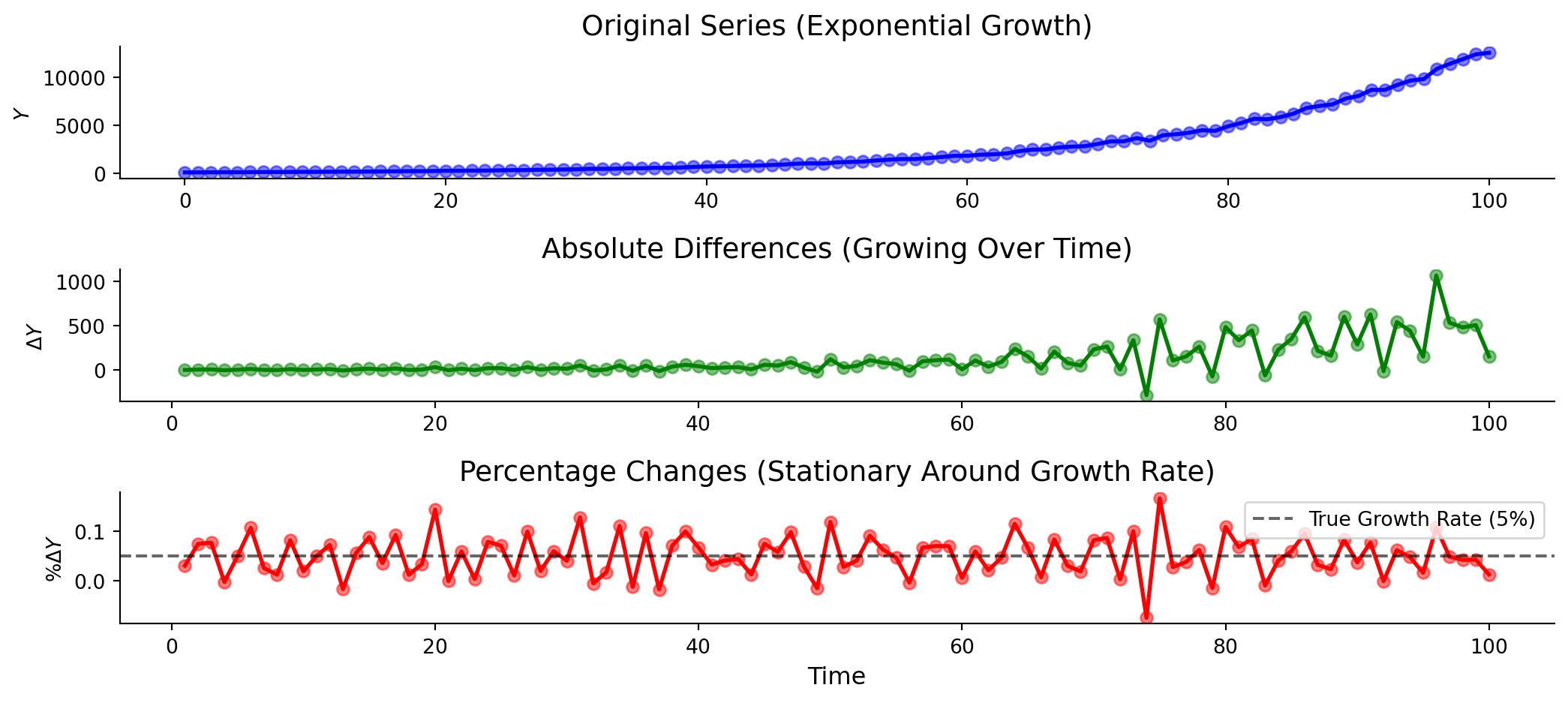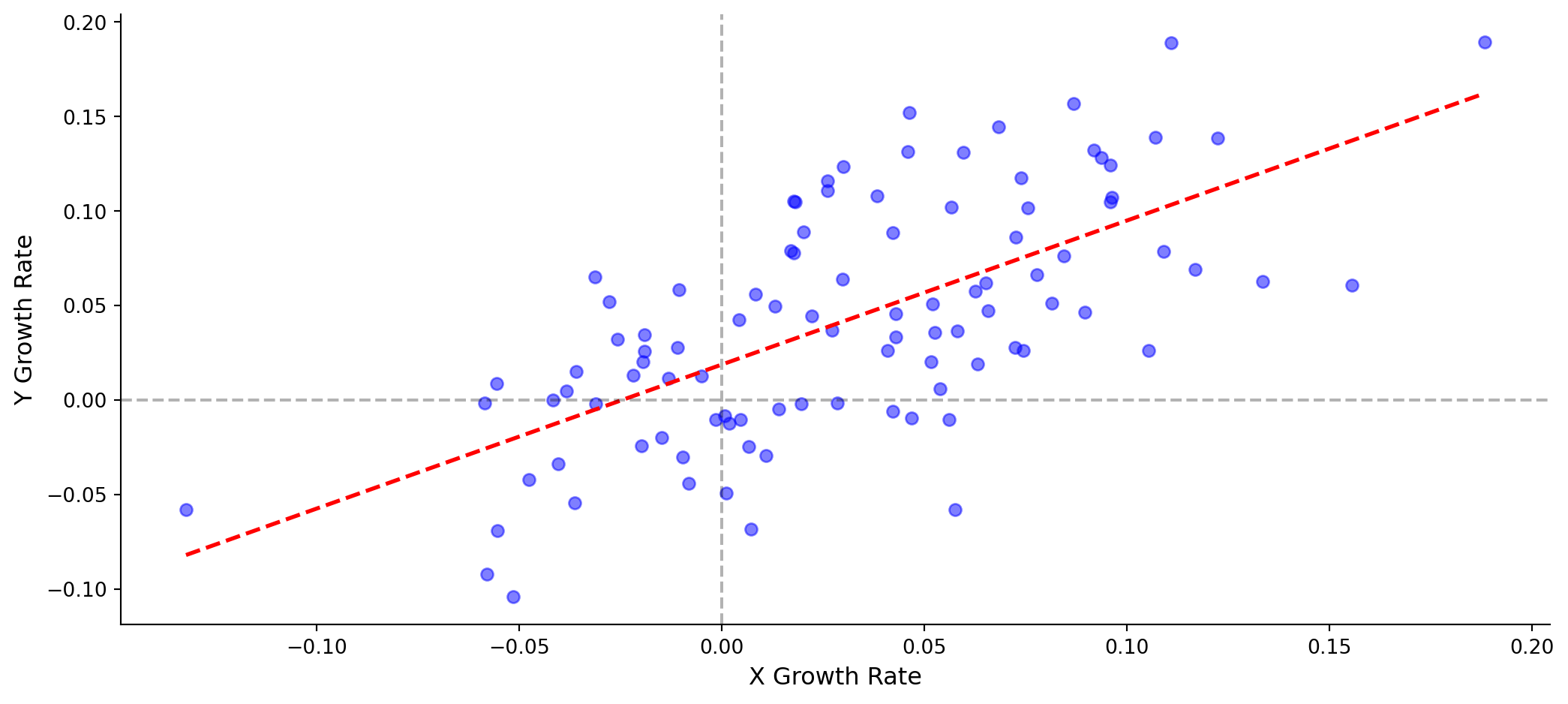
ECON 0150 | Economic Data Analysis
The economist’s data analysis workflow.
Part 4.4 | The Problem of Timeseries
Timeseries Analysis
We often want to model relationships through time.
Data related in time has a special problem:
- Observations are related to their past values (autocorrelation).
- This violates Assumption 4: Independence.
Timeseries Analysis: Autocorrelation
We can check whether values in timeseries are related to their own past values.
A Lag Plot shows the value today (\(t\)) against the value yesterday (\(t-1\)).

> autocorrelation tells us today’s value depends on yesterday’s value
Timeseries: Model 1 (Levels)
The standard approach has problems with time series.
\[\text{Y} = \beta_0 + \beta_1 \cdot \text{t} + \varepsilon\]

Timeseries: Model 1 (Levels)
The standard approach has problems with time series.
\[\text{Y} = \beta_0 + \beta_1 \cdot \text{t} + \varepsilon\]

> you can see it will often be wrong in the same direction repeatedly
Timeseries: Model 1 (Levels)
GLM’s confidence levels requres that the error terms are independent.
\[\text{Y} = \beta_0 + \beta_1 \cdot \text{t} + \varepsilon\]

> this ‘levels’ model shows strong patterns in residuals (autocorrelation)
Exercise 4.4 | Model 1 (Levels)
Examine a levels model of the relationship between GDP and unemployment.
\[\text{Y} = \beta_0 + \beta_1 \times \text{t} + \varepsilon\]
Timeseries: Model 2 (First Differences)
We can fix some issues of autocorrelation by looking at changes instead of levels.
\[\Delta \text{Y}_t = \text{Y}_t - \text{Y}_{t-1}\]

> differences (correctly in this case) shows no relationship
> what would first differences look like if there WAS a positive trend?
Timeseries: Model 2 (First Differences)
What would first differences look like if there WAS a positive trend?

Timeseries: Model 2 (First Differences)
What would first differences look like if there WAS a positive trend?

> the vertical intercept \(\beta_0\) is positive!
> the slope coefficient \(\beta_1\) is zero!
Timeseries: Model 2 (First Differences)
First differences reduces but does not eliminate the problem of autocorrelation.

Exercise 4.4 | Model 2
Examine a first difference model of the relationship between GDP and unemployment.
Timeseries: Model 3 (Double First Differences)
Sometimes we want to measure how two variables move together.
\[\Delta \text{Y}_t = \beta_0 + \beta_1 \times \Delta \text{X}_t + \varepsilon_t\]

Timeseries: Model 3 (Double First Differences)
Relating changes in X to changes in Y.
\[\Delta \text{Y}_t = \beta_0 + \beta_1 \times \Delta \text{X}_t + \varepsilon_t\]
- Further reduces serial correlation in the error terms.
- \(\beta_0\) captures time trend in \(Y\)
- \(\beta_1\) captures the short-term relationship between variables.
- Clear interpretation: how do changes in X relate to changes in Y?
Exercise 4.4 | Model 3
Examine a double first difference model of the relationship between GDP and unemployment.
# Step 1. Create first differences variables
data['gdp_diff'] = df['gdp'].diff()
df['unemployment_diff'] = df['unemployment'].diff()# Fit the differences model
model3 = smf.ols('gdp_diff ~ unemployment_diff', data=data).fit()
print(model3.summary())> \(\beta_1\) now represents the short-term relationship between changes in X and Y
Timeseries: Model 4 (Growth Rates)
Proportional changes provide interpretable coefficients:
\[g_Y = \frac{\text{Y}_t - \text{Y}_{t-1}}{\text{Y}_{t-1}} = \frac{\Delta \text{Y}_t}{\text{Y}_{t-1}}\]

Timeseries: Model 4 (Growth Rates)
Proportional changes provide interpretable coefficients:
\[g_Y = \frac{\text{Y}_t - \text{Y}_{t-1}}{\text{Y}_{t-1}} = \frac{\Delta \text{Y}_t}{\text{Y}_{t-1}}\]

Timeseries: Model 4 (Growth Rates)
Proportional changes provide interpretable coefficients:
\[g_Y = \frac{\text{Y}_t - \text{Y}_{t-1}}{\text{Y}_{t-1}} = \frac{\Delta \text{Y}_t}{\text{Y}_{t-1}}\]

Timeseries: Model 4 (Growth Rates)
Is the growth in Y related to the growth in X?
\[g_Y = \beta_0 + \beta_1 \times g_X + \varepsilon_t\]

Timeseries: Model 4 (Growth Rates)
Is the growth in Y related to the growth in X?
\[g_Y = \beta_0 + \beta_1 \times g_X + \varepsilon_t\]
Growth rate models have the advantages of first differences and can scale better.
- This is natural for variables with exponential growth.
- \(\beta_0\) is Y’s baseline growth rate.
- \(\beta_1\) is how Y’s growth responds to a 1 percentage point increase in X’s growth.
Exercise 4.4 | Model 4
Examine a growth rates model of the relationship between GDP and unemployment.
# Step 1. Calculate growth rates (percentage changes)
data['gdp_growth'] = data['gdp'].pct_change() # in percentage points
data['unemployment_growth'] = data['unemployment'].pct_change()# Step 3. Fit the growth rate model
model4 = smf.ols('gdp_growth ~ unemployment_growth', data=data).fit()
print(model4.summary())> \(\beta_1\) is now expressed in percentage point terms